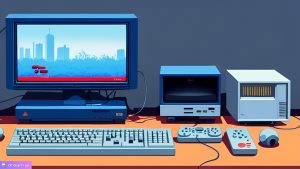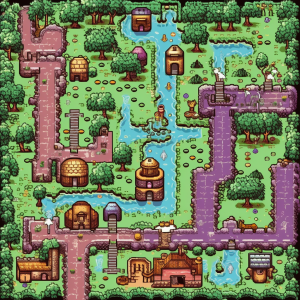
Here is a nostalgic dive into the past, let’s imagine an alternative universe where computer technology never advanced beyond the 1980s. How might the world of home computing and computer games have evolved under these static tech conditions?
The Constraints of Late 80s Computing Technology
Had computer tech frozen at the level of the late 1980s, we’d certainly have less raw power. The typical home computer of the era had less than a megabyte of RAM and a processor speed measured in megahertz. Yet, these limitations could have spurred some fascinating developments.
The Rise of Efficient Programming
In the 8-bit and 16-bit computer era, programmers often operated within strict limits. This led to a knack for crafting compact, efficient code. In a world without tech advancements, we’d likely have seen these efficient programming techniques become standard, maximizing the use of available resources.
A New Focus on Distributed Computing
Another potential development could have been a shift toward distributed computing and networking. While individual machines would be relatively weak, connecting them could create a distributed supercomputer. In this static tech world, this idea of resource sharing, like the early internet, could have been amplified.
The Evolution of Gaming in a Static Tech World
With these hardware constraints, game developers would have needed to continually innovate to push the boundaries. The 1980s already showcased sophisticated games, so we’d likely see a heightened focus on gameplay, story elements, and procedural generation instead of graphical quality.
Procedural Generation: The Game Changer
Procedural generation is a method where parts of a game, like terrain, quests, or characters, are created algorithmically rather than manually. This technique offers vast, unique content with minimal input data. Games like “Minecraft” exemplify this approach.
But procedural generation has its own challenges, like ensuring consistently interesting and balanced content. Yet, in a world of limited computing power, it’s an effective way to offer diverse content without demanding excessive storage space or processing power.
Imagining Video Games with 1980s Processing Power
In a world where processing power stagnated at 1980s levels, video games would have required an increased emphasis on creativity, storytelling, and gameplay depth to offset the inability to provide high-end graphics and audio.

Home Games: A Blast from the Past
Genres popular in the 80s, such as text-based adventures, strategy games, and RPGs, could have seen major expansion. With procedural generation becoming standard, as in games like “No Man’s Sky,” we could imagine vast, varied worlds generated with minimal resources.
Games focusing on player creativity, like the early text-based MUDs (Multi-User Dungeons), might also have seen popularity, enabling players to create their own in-game elements.
Handheld Gaming Evolution
As for handheld games, dedicated handheld gaming devices like the Game Boy could have evolved with better battery life, complex controls, and larger game storage.
Distinctive art styles like pixel art and stylized animations, not requiring a lot of detail, could have been the norm. We might have seen more turn-based games, providing deep, engaging experiences without high-end hardware needs.
The Peripheral and Software Development
More advanced peripherals and accessories could have enhanced user experiences. Even primitive VR solutions might have been possible with the available processing power.
There would likely have been a focus on software optimization and more efficient operating systems, leading to smarter algorithms for resource management, data compression, and file storage.
Conclusion
In essence, a world with static computing power would have emphasized efficiency, creativity, and collaboration. Games would need to evolve in directions that don’t require high processing power or cutting-edge graphics. More focus would be placed on design, storytelling, and innovation to deliver immersive and engaging gameplay experiences.
On the home computing front, a significant focus could have been placed on software optimization and developing more efficient operating systems. Advanced joysticks, motion control devices, or even primitive VR solutions could work in tandem with the existing processing power to enhance user experiences.
However, it’s important to note that certain tasks we take for granted today, such as streaming high-definition video or running complex simulations, would likely remain out of reach.
In conclusion, a tech world frozen in the 80s would have presented its own unique challenges and opportunities, emphasizing the importance of efficiency and creativity in gaming and computing.